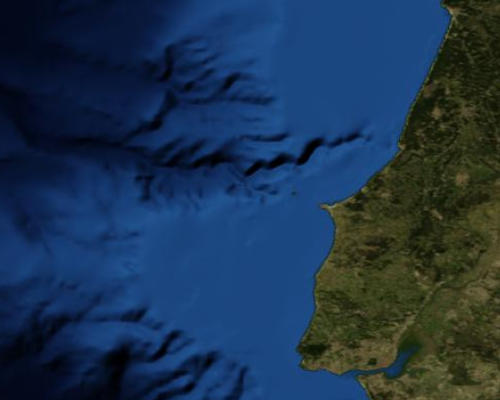Formation of submarine canyons
Canhão da Nazaré
Image Credit: NASA Public Domain
Since the last ice age about 20 000 years ago, the global sea level has risen by about 120 metres. As a result, most coasts have migrated landwards and flooded large shelf areas. Some of these areas are now criss-crossed by submarine canyons.
These canyons are important transport routes for sediments, pollutants and organic carbon, which travel from rivers to the seabed via the canyons. Therefore, it is important to further investigate the formation and development of submarine canyons.
The data
In this dataset, 4717 canyons were identified on continents between 50°N and 50°S (excluding islands). These submarine canyons were assigned 55 variables, including terrestrial and marine topographic variables, oceanographic variables, land-based catchment lithological variables and canyon topographic variables. These data can be used to better understand the shape and extent of submarine canyons and their connection to onshore sediment sources.
Publication of the dataset: Bernhardt A, Schwanghart W (2021) https://doi.org/10.1029/2020GL092234
Research results
34 variables were determined that potentially predict whether a canyon will remain connected to the coastline despite sea-level rise. Canyons that are connected to the coastline occur preferentially on continental margins with narrow and steep shelves, such as the tectonically active margin of the Mediterranean Sea and the Pacific coast of Central and South America.
Furthermore, such canyons are often located in front of river basins on the continents, which are characterised by resistant rock and high water discharge. Such rivers feed coarse-grained sediments to the submarine canyons, which can erode the canyon floor.
Publication of the journal article: Bernhardt A, Schwanghart W (2021) https://doi.org/10.1029/2020GL092234
Texts modified after: Bernhardt A, Schwaghart W (2021) https://doi.org/10.1029/2020GL092234
